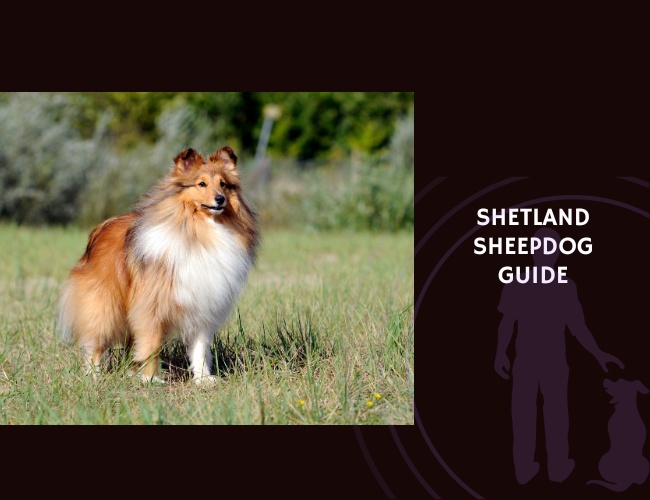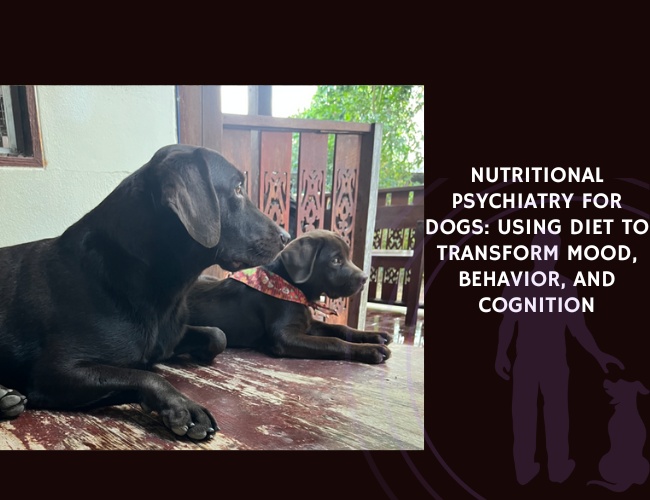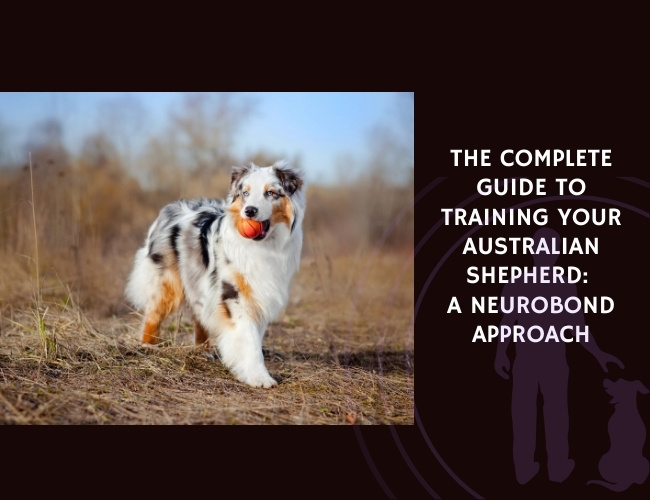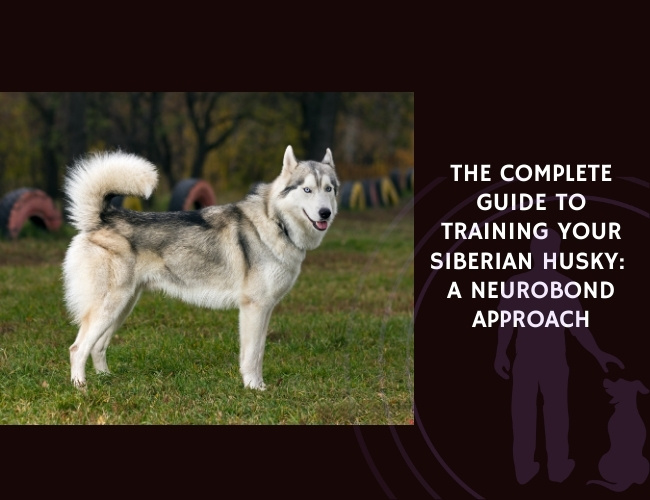The Shetland Sheepdog, affectionately known as the “Sheltie,” emerged from the rugged Shetland Islands off Scotland’s coast, where these remarkable dogs developed alongside miniature livestock in a harsh, windswept environment. This unique heritage shaped not just their compact size but their entire behavioral repertoire—creating a dog that combines the intelligence of larger herding breeds with an intense devotion to their human families.
Today’s Sheltie carries the legacy of generations of working dogs in their DNA, manifesting as a complex blend of herding instincts, environmental sensitivity, and an almost telepathic connection with their owners. Let us guide you through understanding this extraordinary breed, from their nuanced communication style to their specific health needs, helping you determine if a Sheltie might be your perfect companion.
Character & Behaviour
Herding Instinct and Motion Sensitivity
You might notice your Sheltie suddenly crouch low when a bicycle whizzes past, or begin circling children playing in the yard—these behaviors stem from deeply embedded herding instincts that shaped their ancestors’ survival. The Sheltie’s brain processes movement differently than many other breeds, with heightened activity in the motion-detection regions that once helped them track scattered sheep across rocky terrain.
Key herding behaviors you’ll observe:
- Chase sequences triggered by running children, joggers, or small animals
- Nipping at heels (especially in puppies) as they attempt to “guide” family members
- Intense staring or “eye” directed at moving objects
- Circling patterns around groups of people or animals
This motion sensitivity means your Sheltie experiences the world as a constant stream of potential “work”—every moving leaf, every passing car represents something their brain insists needs managing. Understanding this helps explain why Shelties can seem hypervigilant or easily aroused by environmental changes. Rather than viewing these behaviors as problematic, recognizing them as hardwired responses allows you to redirect this energy constructively through activities like agility training or herding trials.
Social Bonding and Emotional Responsiveness
The depth of a Sheltie’s emotional connection to their family often surprises even experienced dog owners. These dogs don’t just live alongside their humans—they synchronize with them, developing an almost uncanny ability to read subtle mood shifts and respond accordingly. This emotional attunement likely evolved from their need to work closely with shepherds in challenging conditions, where understanding human cues meant the difference between successful herding and scattered flocks.
Your Sheltie’s emotional responsiveness manifests through behaviors like:
- Mirroring your energy levels (calm when you’re relaxed, alert when you’re active)
- Seeking physical contact during times of stress or uncertainty
- Displaying visible distress when family members argue or show strong emotions
- Developing separation-related behaviors when isolated from their primary person
This intense bonding creates what many Sheltie owners describe as a “velcro dog”—one who follows from room to room, maintaining visual contact whenever possible. While endearing, this trait requires careful management to prevent overdependence. Creating structured alone time from puppyhood helps your Sheltie develop emotional resilience while maintaining their characteristic devotion. 🧡
Alertness and Vocal Reactivity
Few breeds match the Sheltie’s dedication to announcing every environmental change, from the mail carrier’s approach to a leaf dancing across the deck. This vocal reactivity stems from their historical role as both herders and property guardians on isolated island farms, where alerting humans to approaching strangers or predators was crucial.
Understanding Sheltie vocalizations:
- Sharp, rapid barks: Alarm or excitement about immediate stimuli
- Extended barking sequences: Frustration or barrier-related arousal
- High-pitched yips: Play solicitation or greeting behaviors
- Low grumbles: Mild protest or contentment (context-dependent)
- “Woo-woo” sounds: Excitement or anticipation, often during greetings
The challenge for modern Sheltie owners lies in managing this vocal tendency without suppressing their dog’s natural communication. Environmental management becomes crucial—positioning your Sheltie’s resting areas away from high-traffic windows, using white noise to mask triggering sounds, and teaching a reliable “quiet” cue all help maintain household harmony while respecting your dog’s inherent nature.
Fearfulness and Environmental Reactivity
Shelties possess what researchers might term “environmental hypervigilance”—an acute awareness of changes in their surroundings that can tip into fearfulness without proper socialization. This sensitivity likely provided survival advantages on the windswept Shetland Islands, where sudden weather changes or approaching predators required immediate response.
Modern Shelties may display this reactivity through:
- Startling at unexpected sounds (dropping objects, thunderstorms, fireworks)
- Hesitation around novel objects or changed furniture arrangements
- Stress signals in new environments (panting, pacing, seeking escape)
- Overreaction to visual stimuli like shadows, reflections, or moving curtains
Managing environmental reactivity requires a delicate balance. Early, positive exposure to varied stimuli during the critical socialization period (3-14 weeks) helps build resilience. However, even well-socialized Shelties retain some degree of environmental awareness—it’s part of what makes them excellent watchdogs and sensitive companions. Creating predictable routines and safe spaces helps your Sheltie process their environment without becoming overwhelmed.
Intraspecific Social Behaviour
Your Sheltie’s interactions with other dogs reflect their heritage as both collaborative workers and resource guarders. Unlike breeds developed for pack hunting, Shelties worked relatively independently or in small groups, creating a unique social style that values personal space while maintaining awareness of canine companions.
Typical Sheltie social patterns include:
- Polite but reserved greetings with unfamiliar dogs
- Preference for parallel activities over direct play
- Subtle communication through body positioning and eye contact
- Potential resource guarding around high-value items
- Strong bonds with familiar dogs, especially other herding breeds
This social style means your Sheltie may not be the “dog park butterfly” who plays with everyone. Instead, they often prefer structured activities with known companions or calm, respectful interactions with new dogs. Understanding and respecting these preferences prevents social stress and allows your Sheltie to develop meaningful canine friendships at their own pace. 🐾
Training & Education
Learning Speed and Command Retention
The Sheltie’s mind works like a highly efficient computer, processing new information with remarkable speed and filing it away for future reference. This cognitive ability places them consistently among the top breeds for obedience and working intelligence, but it comes with unique training considerations that set them apart from other quick learners.
Your Sheltie’s learning process typically follows this pattern:
- Initial observation phase (watching you demonstrate or lure the behavior)
- Rapid acquisition (often mastering basic behaviors in 5-15 repetitions)
- Generalization testing (trying variations to understand the parameters)
- Long-term retention (remembering commands even after extended breaks)
This accelerated learning curve means training sessions must evolve quickly to maintain engagement. Once your Sheltie masters “sit,” they’re ready to add duration, distance, or distractions—staying at the basic level leads to boredom and creative interpretations of your requests. Many Sheltie owners discover their dogs begin anticipating command sequences, offering behaviors before being asked, which requires strategic variation in training patterns.
Reinforcement Sensitivity and Motivation Hierarchies
Understanding what motivates your individual Sheltie transforms training from a struggle into a dance of communication. While many breeds show clear preferences for food or toy rewards, Shelties often display more nuanced motivation hierarchies that shift based on context, emotional state, and environmental factors.
Common Sheltie motivators (in typical preference order):
- Verbal praise and emotional approval from their primary handler
- Interactive play sequences (especially chase or tug games)
- Food rewards (with strong preferences for novel or high-value items)
- Environmental access (permission to investigate interesting smells or sounds)
- Social interaction with preferred humans or dogs
This sensitivity extends to corrections—harsh words or frustrated tones can shut down a Sheltie’s willingness to work, sometimes for entire training sessions. They respond best to what trainers call “errorless learning,” where mistakes are prevented through careful setup rather than corrected after the fact. This approach maintains their confidence while channeling their desire to please into productive learning.
Precision and Cue Differentiation
Watch a Sheltie in advanced training, and you’ll notice something remarkable: they distinguish between “down” with your hand at your side versus slightly forward, or “come” spoken with rising versus falling intonation. This precision in cue recognition reflects their heritage of working at distance from shepherds, where subtle signals made the difference between moving sheep left or right.
Your training approach should embrace this precision:
- Maintain consistent body language for each cue
- Avoid multiple names for the same behavior
- Use distinct hand signals for different commands
- Practice cue discrimination exercises regularly
- Reward precision over speed initially
This attention to detail means Shelties excel at complex behaviors requiring multiple components—competition obedience, agility sequences, or trick chains that would frustrate less precise breeds. However, it also means sloppy training mechanics lead to confusion. Taking time to perfect your own consistency as a handler pays enormous dividends with this breed.
Overarousal and Training Frustration
The same sensitivity that makes Shelties brilliant learners can tip into overarousal when training becomes too exciting or challenging. You might notice your Sheltie begin spinning, barking, or offering rapid-fire behaviors when they can’t immediately solve a training puzzle—signs their arousal level has exceeded their thinking threshold.
Managing arousal requires recognizing early warning signs:
- Increased movement speed without improved accuracy
- Vocalizations during typically quiet exercises
- Inability to maintain stationary positions
- Offering unrequested behaviors frantically
- Dilated pupils and rapid panting despite minimal physical exertion
When overarousal appears, successful trainers shift to calming protocols: practicing known behaviors at slower speeds, incorporating relaxation positions between repetitions, or ending with several easy successes. Some Shelties benefit from “thinking breaks”—brief pauses where they’re encouraged to sniff or explore before returning to work with clearer minds.

Handler Dependence and Cooperative Focus
Your Sheltie’s intense focus on you during training sessions reflects thousands of years of selective breeding for handler cooperation. Unlike independent breeds who might problem-solve alone, Shelties constantly reference their human partner, seeking approval and guidance through eye contact and body orientation.
This cooperative focus creates both opportunities and challenges:
- Advantages: Exceptional responsiveness to subtle cues, willingness to work through confusion, strong desire to maintain handler attention
- Challenges: Potential for learned helplessness, stress when handler guidance unclear, difficulty working independently
Balancing handler-focused work with independent thinking exercises helps create a well-rounded Sheltie. Puzzle toys, scent work, and shaped behaviors (where the dog discovers the solution through experimentation) build confidence in independent decision-making while maintaining the cooperative relationship that makes Shelties such willing partners. 🧡
Nutritional Recommendations
Energy Requirements for Active vs Companion Lifestyles
The metabolic needs of your Sheltie vary dramatically based on their daily activity level, creating nutritional requirements that span from the moderate needs of a companion dog to the high-energy demands of an active competitor. Understanding these variations helps prevent both obesity and undernourishment—common issues in this breed that significantly impact health and behavior.
For the typical companion Sheltie (moderate daily walks, indoor play):
- Base caloric needs: 25-30 calories per pound of ideal body weight
- Protein requirements: 22-25% of dry matter
- Fat content: 12-15% for maintenance
- Focus on satiety and weight management
For the active Sheltie (agility, herding, extensive hiking):
- Increased caloric needs: 35-45 calories per pound
- Higher protein requirements: 28-32% of dry matter
- Elevated fat content: 18-20% for sustained energy
- Emphasis on rapid recovery and joint support
The challenge lies in Shelties’ efficient metabolism—they often maintain weight on surprisingly small amounts of food, leading well-meaning owners to overfeed. Regular body condition scoring, where you assess fat coverage over ribs and spine, provides better guidance than scale weight alone.
Micronutrient Support for Coat and Skin Health
That glorious Sheltie coat—with its harsh outer layer and soft undercoat—requires specific nutritional support to maintain its weather-resistant properties and lustrous appearance. The double coat’s health reflects internal nutrition, making it an excellent barometer for dietary adequacy.
Essential nutrients for coat health include:
- Omega-3 fatty acids (EPA/DHA from fish oil): Support skin barrier function and reduce inflammatory responses
- Omega-6 fatty acids (linoleic acid): Maintain coat luster and skin hydration
- Zinc: Critical for coat pigmentation and skin healing
- Biotin and B-complex vitamins: Support keratin production
- Vitamin E: Antioxidant protection for skin cells
- Copper: Essential for coat color maintenance
Many Shelties benefit from supplementation beyond basic commercial diets, particularly omega-3 fatty acids. A typical supplementation protocol might include 20-30mg of EPA/DHA per pound of body weight daily, though individual needs vary based on coat condition and any underlying skin sensitivities.
Digestive Tolerance and Food Sensitivities
The Sheltie’s sensitive nature extends to their digestive system, where rapid diet changes or inappropriate foods can trigger gastrointestinal upset. This sensitivity likely stems from their island heritage, where consistent, simple diets were the norm rather than varied feeding.
Common digestive challenges in Shelties:
- Stress-related colitis during environmental changes
- Food intolerances (particularly to chicken, beef, or grain components)
- Sensitive stomach requiring gradual transitions
- Tendency toward loose stools with overfeeding
- Increased gas production with certain proteins
Managing digestive health requires patience and observation. Novel protein diets (lamb, fish, venison) often suit sensitive Shelties better than common proteins. Probiotic supplementation during stressful periods helps maintain gut health, while digestive enzymes can improve nutrient absorption in seniors or those with chronic sensitivities.
Weight Management and Satiety Regulation
Perhaps no aspect of Sheltie nutrition proves more challenging than weight management. Their efficient metabolism, combined with those pleading eyes and persuasive nature, creates a perfect storm for weight gain that impacts both health and performance.
Successful weight management strategies include:
- Portion control: Measure meals precisely rather than “eyeballing”
- Low-calorie volume: Add green beans, carrots, or pumpkin for satiety
- Treat accountability: All family members track given treats
- Food puzzles: Slow feeding while providing mental stimulation
- Regular weigh-ins: Monthly monitoring catches trends early
For overweight Shelties, weight loss should proceed gradually—no more than 1-2% of body weight weekly. Rapid weight loss can trigger hepatic lipidosis, particularly in previously overweight dogs. Working with your veterinarian to establish target weights and monitoring protocols ensures safe, sustainable weight management.
Supplementation for Joint and Cognitive Support
As your Sheltie ages, targeted supplementation can maintain their agility and mental sharpness—crucial for a breed that thrives on physical and mental activity throughout life. Starting preventive supplementation before obvious decline appears offers the best outcomes.
Beneficial supplements for Shelties include:
- Glucosamine/chondroitin: Joint cartilage support (500mg/400mg for average Sheltie)
- MSM: Anti-inflammatory effects for active dogs
- Turmeric/curcumin: Natural anti-inflammatory with cognitive benefits
- Medium-chain triglycerides (MCTs): Brain health support in seniors
- Antioxidant complexes: Cellular protection against aging
- Phosphatidylserine: Cognitive function maintenance
The key lies in choosing high-quality supplements with proven bioavailability rather than cheaper alternatives that pass through unabsorbed. Many Shelties show improved mobility and mental clarity within 4-6 weeks of starting appropriate supplementation, though benefits accumulate over months of consistent use. 🐾
Sensitive. Smart. Soulful.
Motion shapes meaning.
The Shetland Sheepdog doesn’t just see movement—it feels it, interprets it, and reacts with ancient instinct. A leaf fluttering, a child running, a bird darting across the sky—each becomes a cue, a potential job. This breed doesn’t rest in passive observation. Motion is language, and for the Sheltie, it speaks to a part of the brain wired for control, order, and flow. What might seem like nervous energy is often misread herding impulse, trying to make sense of a chaotic human world.
Sound stirs emotion.
Every Sheltie is born with ears not just for hearing, but for vigilance. A distant door slam, an approaching scooter, even the subtle whine of an appliance—they register it all. And they answer. Barking isn’t noise for a Sheltie—it’s dialogue. They aren’t trying to dominate your space; they’re narrating it, guarding it, managing what you can’t see. Proper boundaries and training can refine this response, but never fully erase it. Nor should it be erased—only channeled, respectfully.

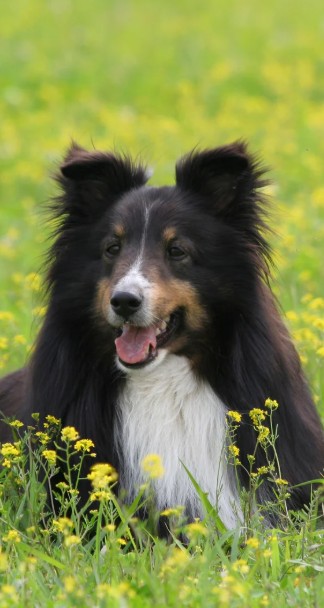
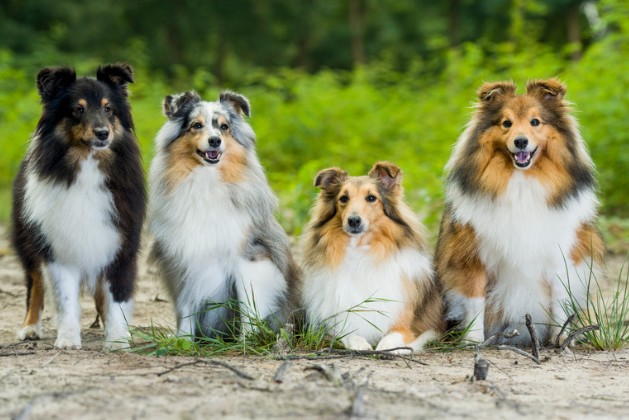
Bond defines behavior.
Shelties don’t do halfway relationships. They sync with your presence, your patterns, your silence. Their intelligence is emotional as much as it is cognitive, and with that comes vulnerability. Ignore their need for closeness, and you risk imbalance. Nourish it, and you get a dog who learns fast, feels deep, and works as if your joy is the mission. This is not a casual breed. This is commitment. A Sheltie sees who you are—and mirrors it. 🧡
Diseases & Susceptibilities
Collie Eye Anomaly (CEA) and Other Ocular Conditions
The genetic legacy of Collie Eye Anomaly affects a significant portion of the Sheltie population, making understanding this condition crucial for every owner. CEA represents a spectrum of developmental abnormalities in the eye that can range from minor changes invisible without specialized equipment to severe malformations causing vision loss.
The condition manifests through several potential abnormalities:
- Choroidal hypoplasia: Underdevelopment of the blood vessel layer beneath the retina
- Colobomas: Pits or holes in the optic disc
- Retinal detachment: Separation of the retina from underlying tissue
- Intraocular hemorrhage: Bleeding within the eye structure
What makes CEA particularly challenging is its variable expression—two affected parents can produce puppies with vastly different severities. Genetic testing now allows identification of carriers, affected dogs, and clear individuals, revolutionizing breeding practices. However, the high prevalence means many wonderful Shelties carry or express CEA, requiring thoughtful management rather than exclusion from breeding programs.
Beyond CEA, Shelties face risks for:
- Progressive Retinal Atrophy (PRA): Leading to gradual vision loss
- Corneal dystrophy: Clouding of the normally clear cornea
- Distichiasis: Abnormal eyelash growth causing irritation
- Persistent pupillary membranes: Fetal tissue strands remaining in the eye
Regular ophthalmologic examinations—ideally by a veterinary ophthalmologist—help detect changes early. Many Shelties with mild CEA live completely normal lives, while those with progressive conditions benefit from environmental modifications and training adaptations that accommodate vision changes.
Hip Dysplasia and Orthopaedic Risks in Small Herding Breeds
While hip dysplasia occurs less frequently in Shelties than in larger herding breeds, their active lifestyle and genetic predisposition still create orthopedic concerns requiring vigilant monitoring. The condition involves abnormal formation of the hip joint, leading to instability, inflammation, and eventual arthritis.
Early warning signs often appear subtly:
- Bunny-hopping gait when running
- Reluctance to jump or climb stairs
- Sitting with legs splayed to one side
- Stiffness after rest periods
- Decreased activity or play drive
Beyond hip dysplasia, Shelties face other orthopedic challenges including luxating patellas (kneecaps that slip out of position) and elbow dysplasia. Their athletic build and desire to work can mask early discomfort, making regular veterinary assessments crucial for early detection.
Prevention strategies focus on:
- Maintaining optimal body weight throughout life
- Avoiding repetitive high-impact activities in growing puppies
- Providing appropriate surfaces for exercise (grass over concrete)
- Supporting joint health through nutrition and supplementation
- Selecting puppies from parents with certified hip scores
Dermatomyositis and Autoimmune Disorders
Dermatomyositis (DM) represents one of the more concerning autoimmune conditions in Shelties, involving inflammation of skin and muscles with a strong genetic component. The condition typically manifests in young dogs, though severity varies dramatically between individuals.
Clinical signs of DM include:
- Facial lesions, particularly around eyes and on ear tips
- Muscle atrophy, especially of the temporal muscles
- Difficulty eating or swallowing in severe cases
- Skin lesions on pressure points and areas of trauma
- Variable progression—some dogs stabilize while others worsen
The autoimmune nature of DM means the body’s immune system attacks its own tissues, requiring careful management to minimize flares. Triggers often include UV exposure, stress, and vaccination reactions, making lifestyle modifications essential. Many affected Shelties live quality lives with appropriate management, including sun protection, immunosuppressive medications when needed, and stress reduction.
Other autoimmune conditions affecting Shelties include:
- Systemic lupus erythematosus (SLE): Multi-system autoimmune disease
- Pemphigus complex: Blistering skin diseases
- Immune-mediated thrombocytopenia: Low platelet counts
- Inflammatory bowel disease: Chronic digestive inflammation
Von Willebrand Disease (vWD) and Bleeding Risk
Von Willebrand Disease, an inherited bleeding disorder, affects blood clotting ability in affected Shelties. The condition results from deficiency or dysfunction of von Willebrand factor, a protein crucial for platelet adhesion during clot formation.
Understanding vWD helps explain symptoms like:
- Prolonged bleeding from minor wounds
- Excessive bleeding during surgeries or dental procedures
- Spontaneous nosebleeds or bleeding gums
- Blood in urine or stool
- Easy bruising or bleeding under the skin
Genetic testing now identifies carriers and affected dogs, allowing informed breeding decisions and medical planning. Shelties with vWD can live normal lives with precautions—informing veterinarians before procedures, avoiding medications that affect clotting, and monitoring for signs of bleeding.
Management strategies include:
- Pre-surgical blood testing and preparation
- Avoiding rough play or activities causing trauma
- Maintaining dental health to prevent gum bleeding
- Having emergency protocols for bleeding episodes
- Considering prophylactic treatment before surgeries

Hypothyroidism and Metabolic Dysfunction
Thyroid dysfunction appears with concerning frequency in middle-aged Shelties, often developing so gradually that owners attribute symptoms to normal aging. The thyroid gland’s underproduction of hormones affects virtually every body system, creating diverse and sometimes confusing clinical signs.
Classic hypothyroid symptoms include:
- Weight gain despite controlled feeding
- Lethargy and reduced activity levels
- Coat changes—dullness, excessive shedding, slow regrowth
- Cold intolerance and heat-seeking behavior
- Behavioral changes including anxiety or aggression
- Recurrent skin and ear infections
Diagnosis requires comprehensive thyroid panels beyond simple T4 levels, as Shelties often show borderline results that need careful interpretation. Once diagnosed, daily thyroid supplementation typically restores normal function, though finding optimal dosing may take several adjustments.
The metabolic impacts of hypothyroidism extend beyond obvious symptoms—affected dogs show increased risks for obesity, diabetes, and cardiovascular issues. Regular monitoring, typically every 6-12 months, ensures hormone levels remain therapeutic while avoiding over-supplementation complications. 🧡
Attitude & Lifestyle
Urban vs Rural Behavioural Adaptation
Your Sheltie’s remarkable adaptability allows them to thrive in environments ranging from busy city apartments to sprawling rural properties, though each setting requires specific management strategies. Their island heritage created dogs capable of adjusting to limited space while maintaining alertness—traits that translate surprisingly well to modern living situations.
Urban living adaptations:
- Heightened alertness to apartment sounds (neighbors, elevators, street noise)
- Need for structured exercise routines replacing natural roaming
- Increased importance of mental stimulation in limited space
- Potential for barrier frustration at windows overlooking busy streets
- Development of “city skills” like ignoring sidewalk distractions
Rural living considerations:
- Stronger expression of herding behaviors with livestock or wildlife
- Increased territorial patrolling of property boundaries
- Higher risk of predator encounters requiring secure fencing
- Natural enrichment through environmental exploration
- Potential for excessive barking at distant sounds
The key to successful adaptation lies in recognizing that Shelties don’t simply tolerate their environment—they actively engage with it. Urban Shelties often develop sophisticated discrimination between “normal” city sounds and actual threats, while rural Shelties may expand their perceived territory to include neighboring properties. Providing appropriate outlets for their environmental monitoring instincts prevents frustration in either setting.
Exercise Needs and Enrichment Strategies
The Sheltie’s exercise requirements extend far beyond simple physical activity—these dogs crave mental challenges interwoven with movement, reflecting their heritage as problem-solving working dogs. A tired Sheltie isn’t just physically exhausted but mentally satisfied, having engaged both body and mind.
Daily exercise foundations should include:
- Morning activation: 20-30 minutes combining walking with training
- Midday mental work: Puzzle feeders, trick training, or scent games
- Evening adventure: 30-45 minutes of varied activity (fetch, agility, exploration)
- Calming activities: Settled training, grooming, or massage before bed
Beyond structured exercise, Shelties thrive on what trainers call “environmental enrichment”—opportunities to engage their senses and make choices. Rotating walking routes, hiding treats for searching, and providing novel objects for investigation all satisfy their need for mental stimulation. Many Shelties develop favorite activities they anticipate eagerly, from specific hiking trails to weekly agility classes.
The consequences of inadequate exercise manifest through:
- Destructive behaviors targeting household items
- Excessive barking or attention-seeking
- Shadow or light chasing behaviors
- Hypervigilance and inability to settle
- Development of obsessive patterns
Child Compatibility and Family Dynamics
Shelties often excel as family dogs, though their herding instincts and sensitivity require thoughtful management around children. Their protective nature creates devoted guardians who monitor young family members carefully, sometimes to the point of attempting to herd running children—a behavior requiring gentle redirection rather than punishment.
Successful Sheltie-child relationships develop through:
- Teaching children to respect the dog’s sensitive nature
- Supervising interactions during high-energy play
- Establishing quiet zones where the Sheltie can retreat
- Involving children in training using positive methods
- Creating structured activities both can enjoy together
The breed’s emotional sensitivity means they often mirror household dynamics—becoming anxious in chaotic environments or thriving in calm, predictable homes. Shelties typically bond strongly with respectful children who understand their communication, developing into patient companions who tolerate dress-up sessions and tea parties with remarkable grace.
However, challenges can arise with:
- Very young children who move unpredictably
- Rough or loud play that overwhelms sensitive dogs
- Multiple children running simultaneously (triggering herding)
- Inconsistent rules between family members
- Competition for primary handler attention
Noise Sensitivity and Environmental Conditioning
Perhaps no trait causes more concern for Sheltie owners than their breed’s pronounced sensitivity to sound. From thunderstorms to fireworks, many Shelties display stress responses to noises that barely register with other breeds, requiring proactive management to prevent escalating phobias.
Common noise triggers include:
- Thunder and fireworks (sudden, unpredictable sounds)
- Construction or renovation noises
- Household appliances (vacuums, blenders, hair dryers)
- Electronic beeps and alarms
- Traffic sounds in urban environments
Early conditioning makes enormous differences in noise tolerance. Puppies exposed to varied sounds during their critical socialization period—through careful, positive associations—develop better coping mechanisms. However, even well-socialized Shelties may retain some noise sensitivity, particularly to sounds resembling natural threats their ancestors avoided.
Management strategies focus on:
- Creating safe spaces with sound dampening
- Using white noise or calming music during triggering events
- Desensitization protocols for predictable sounds
- Considering anti-anxiety supplements or medications for severe cases
- Avoiding reinforcement of fearful behaviors while providing comfort
Ageing and Cognitive Support in Seniors
The senior Sheltie often ages gracefully, maintaining their characteristic alertness and devotion well into their teens. However, their active minds require continued stimulation to prevent cognitive decline, while their aging bodies need modifications to maintain comfort and mobility.
Age-related changes typically appear around 8-10 years:
- Slight clouding of eyes (normal nuclear sclerosis vs. cataracts)
- Graying of muzzle and face
- Decreased stamina during activities
- Longer recovery periods after exercise
- Increased sleep requirements
- Potential hearing decline
Cognitive support for aging Shelties includes:
- Mental exercise: Simple training sessions, food puzzles, new tricks
- Social engagement: Continued interaction with familiar dogs and people
- Environmental enrichment: Novel experiences within physical limitations
- Dietary support: Senior formulas with cognitive-supporting nutrients
- Medical management: Regular screening for age-related conditions
Many senior Shelties benefit from adjusted routines that honor their experience while accommodating limitations. Shorter, more frequent walks replace lengthy adventures. Raised food bowls ease eating. Ramps assist with car entry. These modifications allow senior Shelties to maintain their dignity and engagement with family life.
The emotional bonds between Shelties and their families often intensify with age, creating deeply meaningful relationships that enrich the golden years. Their continued desire to please and participate, even as bodies slow, exemplifies the breed’s enduring spirit. 🐾
Conclusion: Is the Shetland Sheepdog Right for You?
After exploring the complex tapestry of Sheltie characteristics—from their motion-sensitive herding instincts to their profound emotional bonds—you might wonder if this remarkable breed aligns with your lifestyle. The answer depends less on your living situation and more on your readiness to engage with a dog who views partnership as a full-time commitment.
Shelties thrive with owners who:
- Appreciate sensitivity as a strength rather than a weakness
- Enjoy training as communication rather than domination
- Can provide consistent mental and physical stimulation
- Understand that barking is conversation, not defiance
- Value deep emotional connection over casual companionship
- Accept grooming as bonding time rather than chore
Shelties may struggle in homes with:
- Chaotic, unpredictable schedules
- Harsh training methods or impatient handlers
- Limited time for interaction and exercise
- Expectation of independent, aloof behavior
- Intolerance for vocal communication
- Preference for low-maintenance pets
The Sheltie experience is one of partnership in the truest sense—these dogs don’t simply live with you but actively participate in your daily life. They celebrate your returns home with spinning dances of joy, comfort you during difficult times with gentle presence, and challenge you to become a better communicator and companion.
For those ready to embrace this intensity, Shelties offer rewards beyond measure: unwavering loyalty, eager participation in activities, and an emotional intelligence that creates profound interspecies bonds. They transform ordinary moments—a walk becoming an adventure, training becoming conversation, quiet evenings becoming companionable contentment.
Your journey with a Sheltie will include moments of frustration when their sensitivity seems overwhelming, pride when their intelligence shines, and deep satisfaction in the partnership you build together. This isn’t just dog ownership—it’s a relationship that enriches both species, creating memories and bonds that last a lifetime.
If you’re ready for a dog who notices everything, participates enthusiastically, and loves deeply, the Shetland Sheepdog might just be your perfect match. Welcome to a world where every day brings new opportunities for connection, communication, and joy. 🧡

